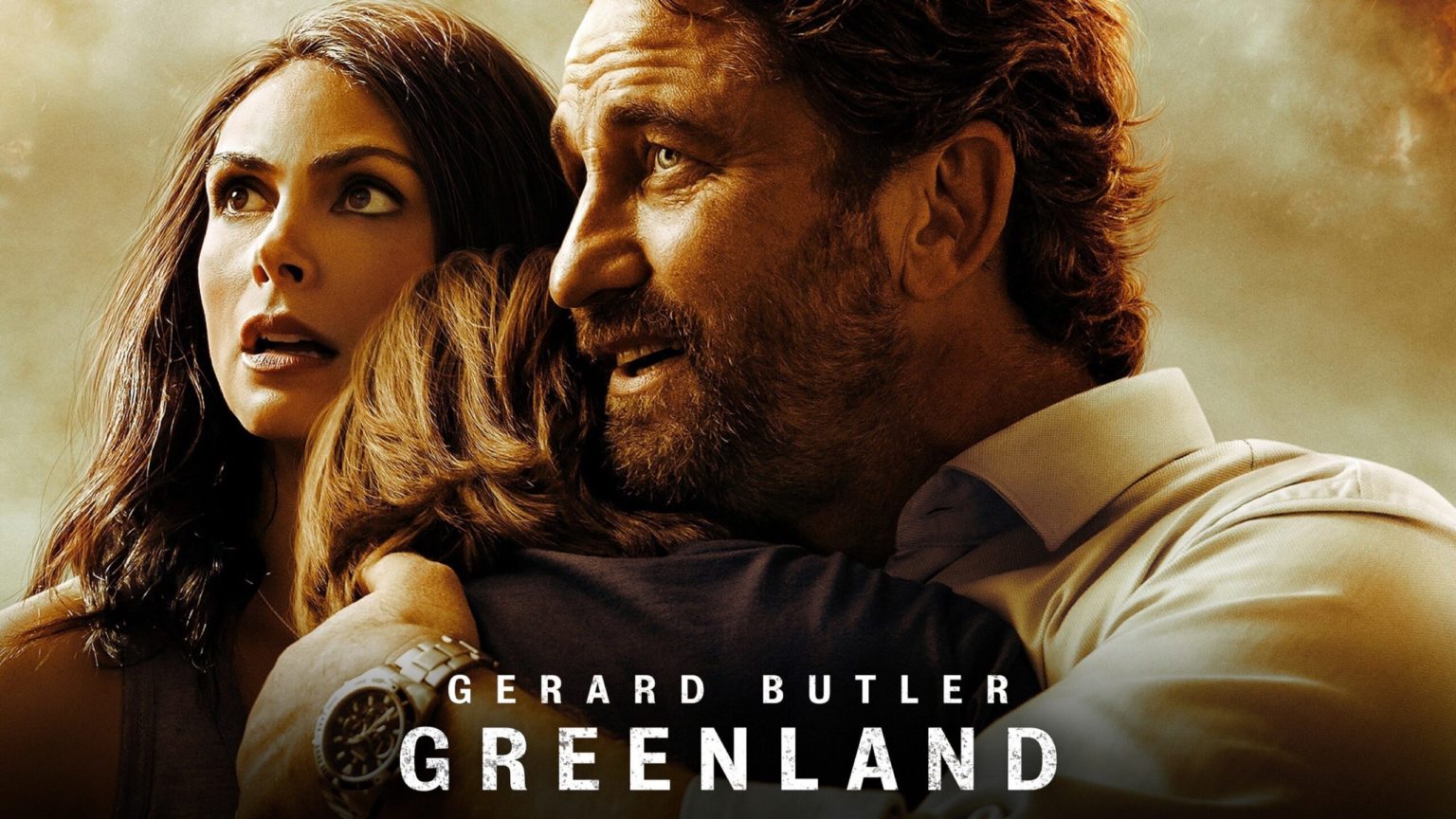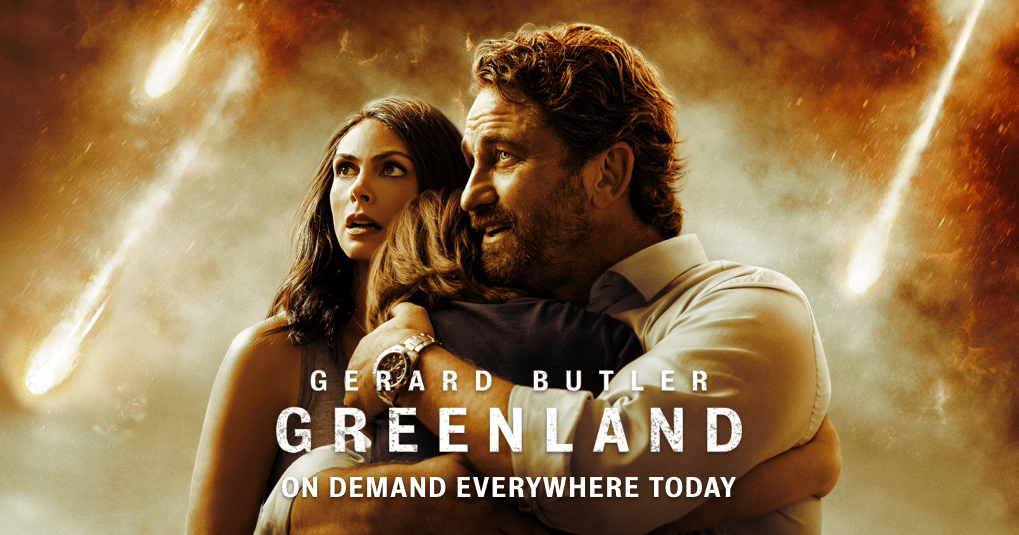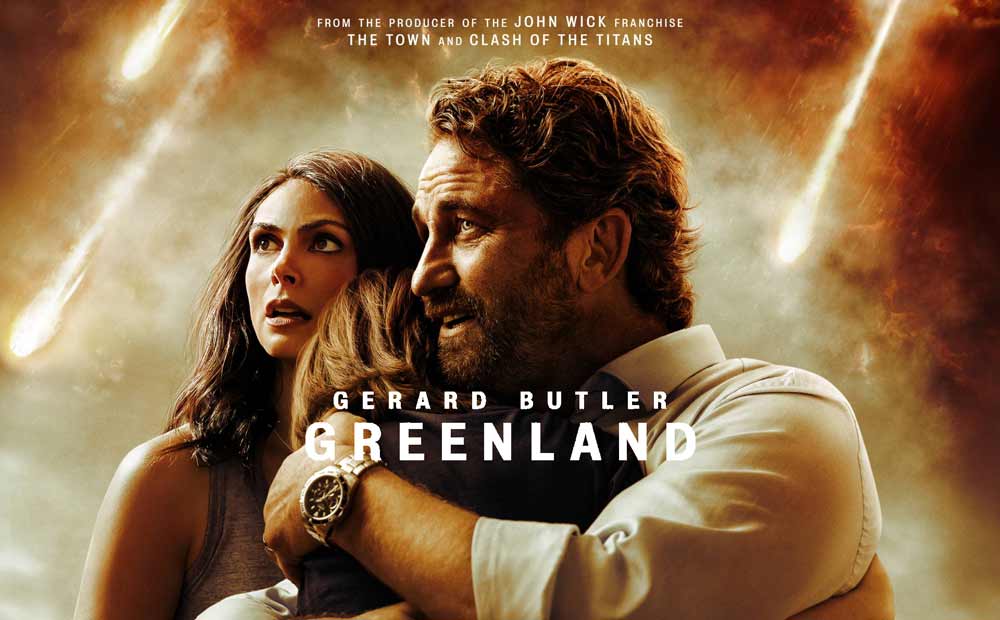Audience Response to Greenland
Greenland, a disaster movie featuring Gerard Butler battling a comet hurtling towards Earth, received a mixed bag of reactions from audiences. While it didn’t exactly set the box office ablaze, it garnered a dedicated following and sparked considerable online discussion, revealing a fascinating spectrum of opinions. The film’s success wasn’t solely based on critical acclaim, but rather on its ability to tap into primal anxieties and offer a surprisingly emotional core amidst the chaos.
Audience Reactions to Greenland
Audience response to Greenland was, to put it mildly, a rollercoaster. Reviews ranged from enthusiastic praise for its intense action sequences and emotional family drama to harsh criticism of its occasionally predictable plot and uneven pacing. Many viewers appreciated the grounded portrayal of a global catastrophe, finding it more relatable than some other, more fantastical disaster films. Others, however, felt the film leaned too heavily on familiar disaster movie tropes, resulting in a sense of déjà vu. The film’s success stemmed from a potent combination of visceral thrills and genuine emotional resonance, appealing to a broad, if somewhat divided, audience.
Aspects Resonating with Viewers
Several key elements of Greenland resonated deeply with viewers. The central focus on family dynamics, specifically the strained yet ultimately powerful bond between John Garrity (Butler) and his family, proved to be a significant draw. Many praised the film’s realistic portrayal of human behavior under extreme pressure, emphasizing the relatable struggles and sacrifices individuals make to protect their loved ones. The sheer scale and visual spectacle of the impending comet impact also contributed to the film’s appeal, providing a sense of awe and terrifying suspense. The emotional core, woven throughout the action, gave the film a depth that many disaster movies lack.
Common Criticisms of Greenland
Despite its positive aspects, Greenland wasn’t without its detractors. A common criticism revolved around the film’s plot predictability. Some viewers felt the narrative followed a well-worn path, lacking the originality or surprising twists needed to truly elevate it above other disaster films. Another recurring complaint concerned the pacing, with some sections feeling rushed or underdeveloped, while others dragged on unnecessarily. The film’s ending, while emotionally satisfying for some, was deemed somewhat abrupt and unsatisfying by others. Finally, some felt that the film’s scientific accuracy was questionable, a common criticism leveled at many disaster movies.
Audience Ratings Summary
| Platform | Average Rating | Number of Ratings | Overall Sentiment |
|---|---|---|---|
| IMDb | 6.4/10 | 150,000+ | Mostly Positive |
| Rotten Tomatoes (Audience Score) | 70% | 50,000+ | Positive |
| Google Users | 4.1/5 | 20,000+ | Positive |
| Metacritic (User Score) | 6.8/10 | 10,000+ | Mostly Positive |
Greenland’s Genre and Themes
Greenland isn’t your typical popcorn flick; it cleverly blends several genres to create a surprisingly nuanced and emotionally resonant experience. While it might initially appear as a straightforward disaster movie, a closer look reveals layers of family drama, survival thriller, and even touches of social commentary woven into its narrative. The film masterfully uses genre conventions not just for thrills, but to amplify the emotional weight of its central themes.
Greenland primarily functions as a disaster movie, showcasing the devastating impact of a comet impacting Earth. However, the film’s focus quickly shifts from the large-scale spectacle of planetary destruction to the intimate struggles of a family fighting for survival amidst the chaos. This shift in perspective transforms the film into a compelling survival thriller, where the true enemy isn’t the comet itself, but the desperate, often selfish, actions of humanity in the face of impending doom.
Genre Categorization
Greenland defies easy categorization. It’s undeniably a disaster movie, employing the familiar tropes of impending doom, societal breakdown, and desperate survival. However, the film’s heart lies in the intimate family drama unfolding amidst the cataclysm. The relentless pursuit of safety and the fracturing relationships under pressure transform the film into a tense survival thriller. Furthermore, the film subtly incorporates elements of social commentary, highlighting themes of inequality and the breakdown of societal order during a crisis. It’s a hybrid, expertly blending these genres to create a unique cinematic experience.
Dominant Themes
The film’s central theme is the unwavering strength of familial bonds in the face of unimaginable adversity. John Garrity, the protagonist, relentlessly fights to protect his family, embodying the powerful instinct for survival and the selfless love of a father. Beyond this core theme, Greenland explores the fragility of human civilization and the potential for both extreme altruism and appalling selfishness when confronted with a global catastrophe. The film’s depiction of societal collapse subtly critiques the inequalities within society, as resources and opportunities for survival are not equally distributed.
Genre Conventions and Theme Conveyance
The film utilizes several genre conventions to effectively convey its themes. The disaster movie elements, such as the impending comet impact and the widespread panic, establish a high-stakes environment that underscores the gravity of the family’s struggles. The survival thriller elements, including the perilous journey and constant threats, heighten the tension and emphasize the family’s resilience. The use of close-up shots during moments of intense emotion enhances the emotional impact of the familial bonds, while the wide shots of devastation emphasize the overwhelming scale of the disaster and the fragility of human life. The juxtaposition of these different cinematic techniques effectively amplifies the film’s exploration of family, survival, and the consequences of societal failings in a crisis.
The Film’s Visual and Sound Design
Greenland’s visual and sound design aren’t just window dressing; they’re integral to the film’s terrifyingly realistic portrayal of a world-ending event. The filmmakers masterfully blend gritty realism with moments of breathtaking, awe-inspiring destruction, creating a visceral experience that keeps you on the edge of your seat. The sound design, in particular, elevates the tension to almost unbearable levels, amplifying the chaos and vulnerability of the characters.
The film’s cinematography is characterized by a hand-held, almost documentary-style approach, particularly during the scenes depicting the chaos of the comet’s impact and the desperate struggle for survival. This shaky camera work adds to the sense of immediacy and urgency, making the viewer feel like they’re right there in the thick of it, dodging debris and fleeing from the skyfire. The editing is equally effective, seamlessly transitioning between moments of quiet intimacy and explosive action, keeping the pace frenetic and unpredictable, mirroring the characters’ desperate situation. Wide shots showcase the scale of the devastation, while tighter close-ups emphasize the characters’ emotional responses to the unfolding catastrophe. Color palettes shift dramatically, moving from the muted greys and browns of the pre-impact world to the fiery oranges and yellows of the destruction and finally to the bleak, ash-covered landscapes of the aftermath.
Sound and Music’s Contribution to Atmosphere and Tension
The sound design in Greenland is as much a character as any human in the film. The subtle hum of approaching danger, building to a deafening roar of explosions and shattering glass, is masterfully executed. The score, while relatively understated during quieter moments, swells dramatically during action sequences, heightening the tension and amplifying the emotional impact of the visuals. The use of silence is equally important, punctuating moments of intense fear and vulnerability with a chilling effectiveness. The constant background hum of the approaching comet, a low, almost subsonic drone, acts as a persistent reminder of the ever-present threat. This constant low-level anxiety is punctuated by sudden, jarring sounds – the screech of metal, the screams of panicked people – creating a relentless assault on the senses that perfectly mirrors the characters’ experience.
A Specific Scene: The Family’s Escape from Atlanta
Consider the scene where the Garrity family is attempting to escape Atlanta amidst the escalating chaos. The visual chaos is mirrored by the cacophony of sounds: sirens wailing, car horns blaring, people screaming, and the ever-present, ominous rumble of the approaching comet. The camera shakes violently as John Garrity drives through the collapsing city, narrowly avoiding falling debris and panicked crowds. The score swells with a sense of desperate urgency, reflecting the family’s fight for survival. The contrast between the family’s desperate struggle for survival and the overwhelming scale of the disaster is powerfully emphasized by the interplay of the visual chaos and the relentless, overwhelming sound design. This scene perfectly encapsulates the film’s overall approach: a relentless assault on the senses that leaves the viewer breathless and emotionally drained.
Performance Analysis

Greenland’s success hinges not only on its spectacular disaster sequences but also on the believable performances of its lead actors, Gerard Butler and Morena Baccarin. Their portrayals of John and Allison Garrity, a family grappling with an impending apocalypse, are crucial to the film’s emotional core, making the audience invest in their survival. The film effectively utilizes the actors’ strengths to create a compelling dynamic between them.
The actors convincingly portray characters under immense pressure. Butler, known for his action-hero roles, displays a surprising vulnerability and desperation as John, a man desperately trying to protect his family. Baccarin, equally impressive, embodies Allison’s resilience and growing fear, making her a relatable and sympathetic figure. Their performances are nuanced, avoiding stereotypical portrayals of panicked parents. They showcase a believable progression of emotions as the family faces increasingly dire circumstances, from initial disbelief to escalating terror and ultimately, exhausted determination.
Gerard Butler’s Portrayal of John Garrity, Review movie greenland
Butler’s performance is a departure from his usual action-movie persona. While he still retains a rugged physicality, his John Garrity is less the invincible hero and more a flawed, frightened father doing his best in impossible circumstances. The character’s emotional arc is palpable, showcasing a man struggling with his own limitations and the weight of responsibility. His internal conflict – between his protective instincts and his own growing fear – is convincingly portrayed through subtle changes in his demeanor and physicality. The scenes where he must make difficult choices, potentially jeopardizing his family’s safety, are particularly compelling.
Morena Baccarin’s Portrayal of Allison Garrity
Baccarin’s portrayal of Allison offers a powerful counterpoint to Butler’s John. While John is often driven by instinct and a desperate need for action, Allison grounds the family with her pragmatism and resourcefulness. Her fear is never portrayed as weakness; rather, it fuels her determination to survive and protect her son. Baccarin’s performance is subtly powerful, showcasing Allison’s inner strength without resorting to overt displays of heroism. Her scenes of quiet desperation and moments of quiet strength are particularly affecting.
Comparison of Acting Styles
Butler and Baccarin employ distinct acting styles, yet their performances complement each other beautifully. Butler’s performance is more outwardly physical, relying on expressive body language and facial expressions to convey emotion. Baccarin, on the other hand, uses a more restrained approach, relying on subtle nuances in her voice and expressions to convey a deeper emotional range. This contrast in styles creates a dynamic tension between the characters, mirroring the stresses placed upon their relationship by the apocalyptic events unfolding around them. The differences in their acting styles highlight the different coping mechanisms of the characters, adding depth to their portrayals.
Greenland’s Place in Disaster Movie Genre

Greenland, while sharing DNA with the classic disaster movie, carves out its own niche by focusing intensely on the intimate struggles of a family amidst global catastrophe. Unlike many disaster films that prioritize spectacle over character development, Greenland prioritizes the emotional journey of its protagonists, making the apocalyptic backdrop a framework for a deeply personal story. This shift in focus allows the film to explore themes of family, survival, and the resilience of the human spirit in a way that many purely spectacle-driven disaster films often miss.
Greenland’s unique approach to the disaster genre is evident in its character-driven narrative. The film meticulously builds a relationship between John Garrity, his wife Allison, and their son Nathan, establishing their vulnerabilities and strengths before the comet even makes its dramatic entrance. This intimate focus allows the audience to deeply invest in their survival, making the stakes feel profoundly personal. This is a departure from many disaster films that often present a large ensemble cast, diluting the emotional impact of individual characters.
Comparison to Other Disaster Movies
Greenland distinguishes itself from other disaster movies by eschewing the typical “all-hands-on-deck” heroism often seen in films like “Armageddon” or “2012.” Instead, it presents a more grounded, almost claustrophobic experience, focusing on the challenges faced by a single family attempting to navigate a chaotic and unpredictable situation. While films like “The Day After Tomorrow” showcase widespread environmental catastrophe, Greenland narrows its focus, creating a more intimate and arguably more terrifying sense of vulnerability. The scale of the disaster is still immense, but the narrative lens remains tightly focused on the Garrity family, enhancing the emotional weight of their struggles. This intimacy contrasts sharply with the broader, more epic scope of many other disaster movies.
Unique Elements and Contributions to the Genre
One of Greenland’s most unique contributions to the disaster genre is its exploration of societal collapse in a relatively realistic manner. The film depicts the breakdown of law and order, the desperation of individuals fighting for survival, and the ethical dilemmas faced by those in power, all with a palpable sense of dread. This is not a romanticized portrayal of heroism, but a raw depiction of humanity’s struggle against overwhelming odds. This grounded approach sets it apart from disaster films that often portray more idealized scenarios of human resilience.
Strengths and Weaknesses Compared to Similar Films
Greenland’s strength lies in its emotional core. The performances are compelling, the family dynamics are relatable, and the film effectively builds suspense and tension. However, some critics have argued that the pacing is uneven at times, and that certain plot points feel somewhat contrived. Compared to more action-packed disaster movies, Greenland’s slower pace and focus on character development might be seen as a weakness by some viewers. However, this slower pace allows for a deeper exploration of the emotional impact of the catastrophe, something that is often overlooked in the rush of spectacle in other films. Ultimately, Greenland’s success lies in its willingness to prioritize emotional depth over sheer spectacle, making it a unique and thought-provoking addition to the disaster movie genre.
Impact and Legacy of Greenland: Review Movie Greenland

Greenland, despite its relatively straightforward premise of a comet hurtling towards Earth, managed to carve out a niche for itself in the disaster movie landscape. Its impact, however, wasn’t solely measured in box office receipts, but also in the way it resonated with audiences and sparked conversations about societal themes. While it didn’t quite become a cultural phenomenon on the scale of, say, *Titanic*, its legacy is more nuanced and deserves closer examination.
The film’s box office performance was modest, particularly considering its release during the still-recovering phase of the COVID-19 pandemic. While it didn’t break any records, it performed reasonably well, demonstrating a consistent audience interest in well-made disaster films, even during challenging circumstances. This suggests a degree of resilience within the genre and a continuing appetite for stories that explore humanity’s vulnerability in the face of overwhelming natural forces. It’s crucial to remember that many factors influence a film’s box office success, and direct comparisons with pre-pandemic releases would be unfair. Instead, we should consider its relative success within its own context.
Box Office Performance and Overall Impact
Greenland’s financial success, while not blockbuster-level, was enough to justify its production and distribution. This success can be attributed to a number of factors, including effective marketing, positive critical reception (in certain quarters), and a general audience craving for escapist entertainment. The film’s performance highlights the continued viability of the disaster movie genre, suggesting there is a consistent demand for such films even when faced with competition from other genres and distribution challenges. The film’s relative success also indicates a level of audience interest in stories that explore themes of family survival and societal collapse, which are timeless themes that resonate across cultures.
Cultural Relevance and Lasting Effect on Viewers
Greenland’s cultural relevance stems from its exploration of themes of family, survival, and societal breakdown during a catastrophic event. The film taps into primal fears and anxieties, prompting viewers to contemplate their own preparedness and resilience in the face of disaster. While it didn’t spark widespread public discourse in the same way some other disaster films have, it generated online discussions and reviews, showcasing its ability to engage viewers on an emotional level. Many online reviews focused on the realistic portrayal of panic and desperation in the face of overwhelming odds, a stark contrast to some more fantastical disaster movies. This grounded approach likely contributed to its lasting effect on some viewers, prompting reflection on personal vulnerabilities and societal structures.
Media References and Discussions
While Greenland didn’t become a ubiquitous cultural touchstone, its release generated discussion across various online platforms. Reviews appeared on major film websites and in social media discussions, often comparing it to other disaster movies or analyzing its portrayal of societal response to crisis. Several podcasts and online film communities dedicated segments to the film, further solidifying its presence in the cultural conversation, albeit a relatively niche one. The film’s themes of societal breakdown and the importance of family were frequently highlighted in these discussions, showcasing the film’s ability to resonate with audiences on a deeper, thematic level beyond the spectacle of disaster. These conversations, while not massive in scale, contribute to the film’s overall legacy and impact.